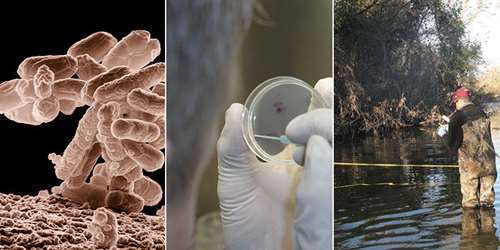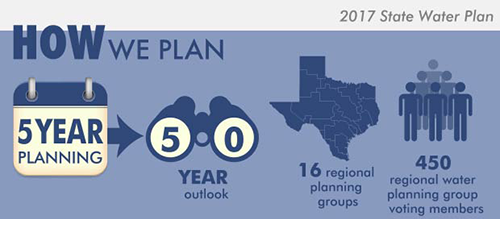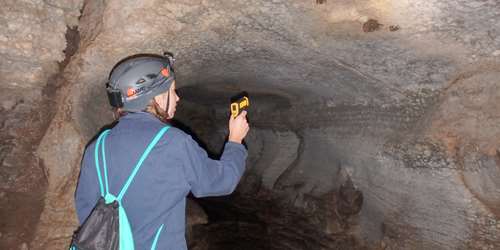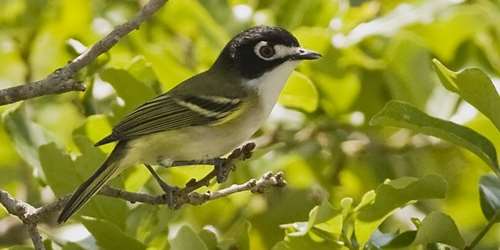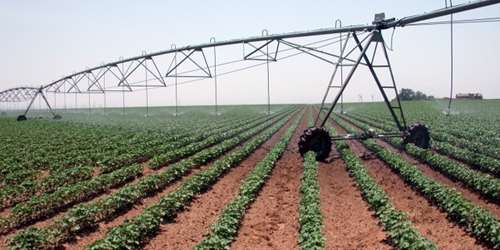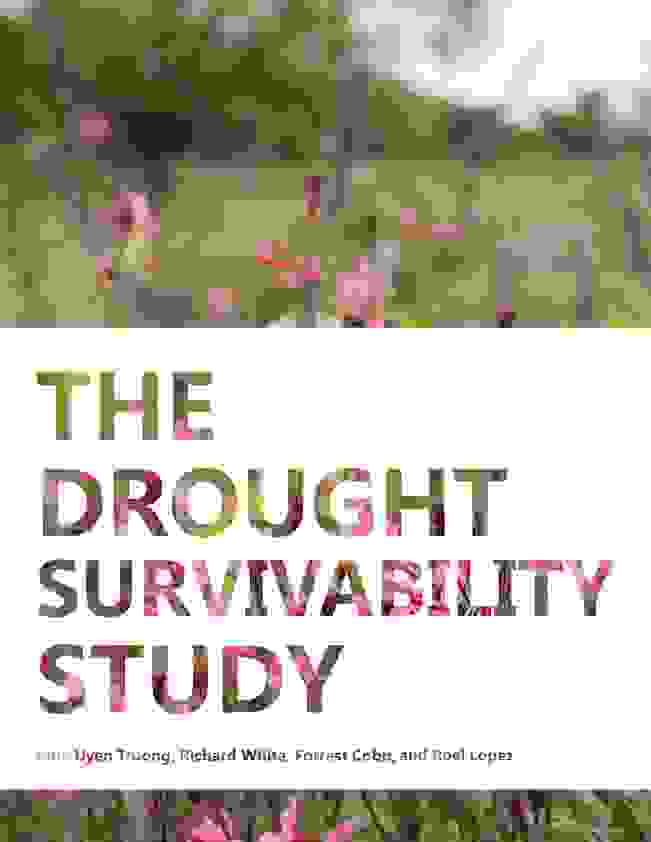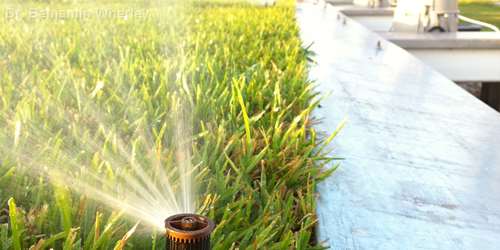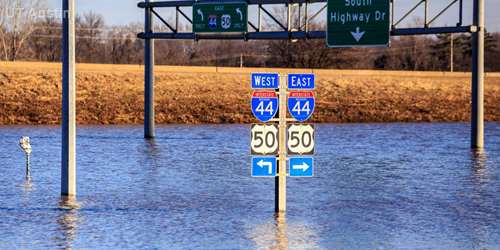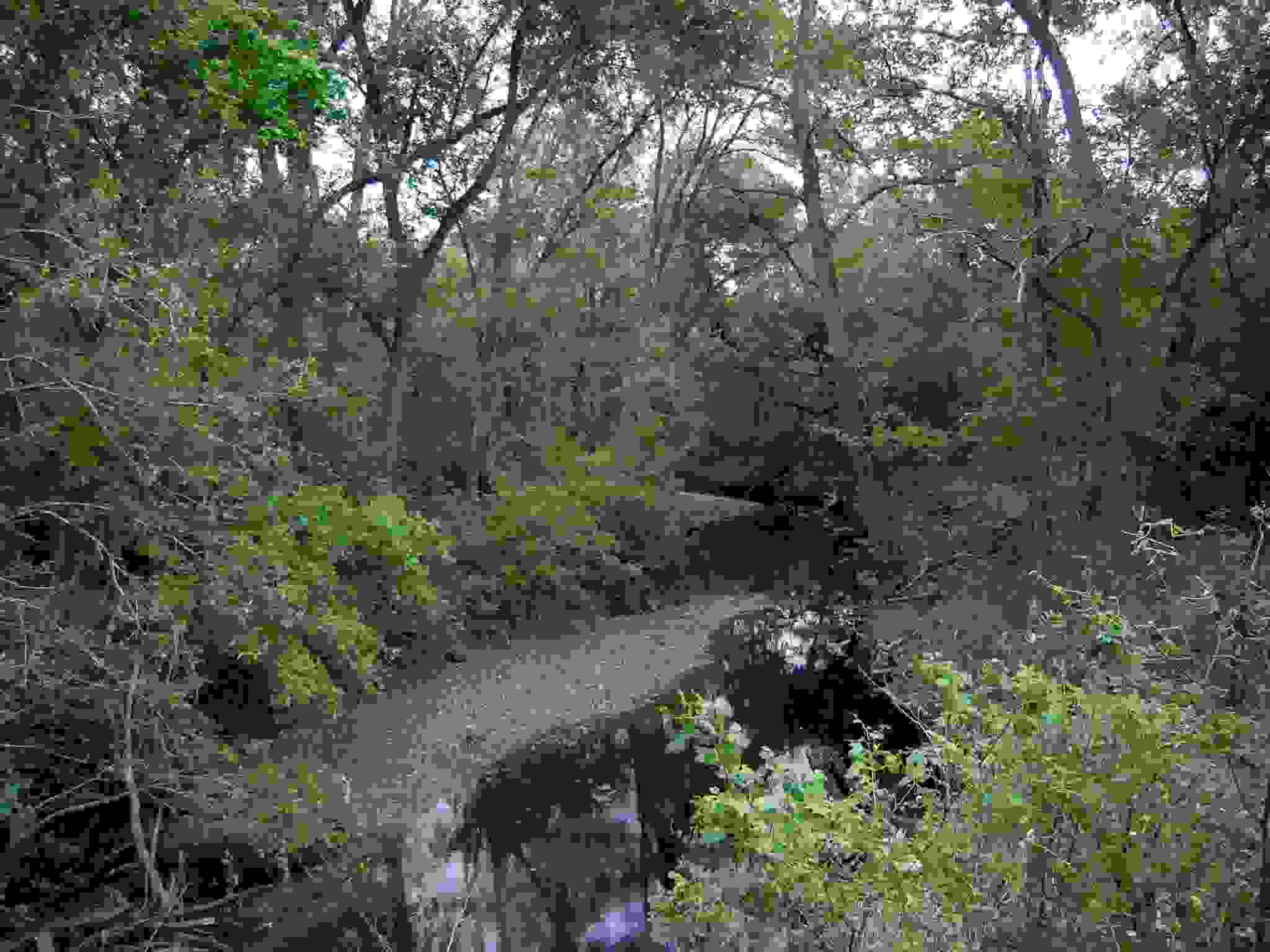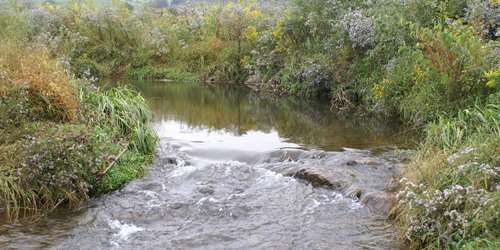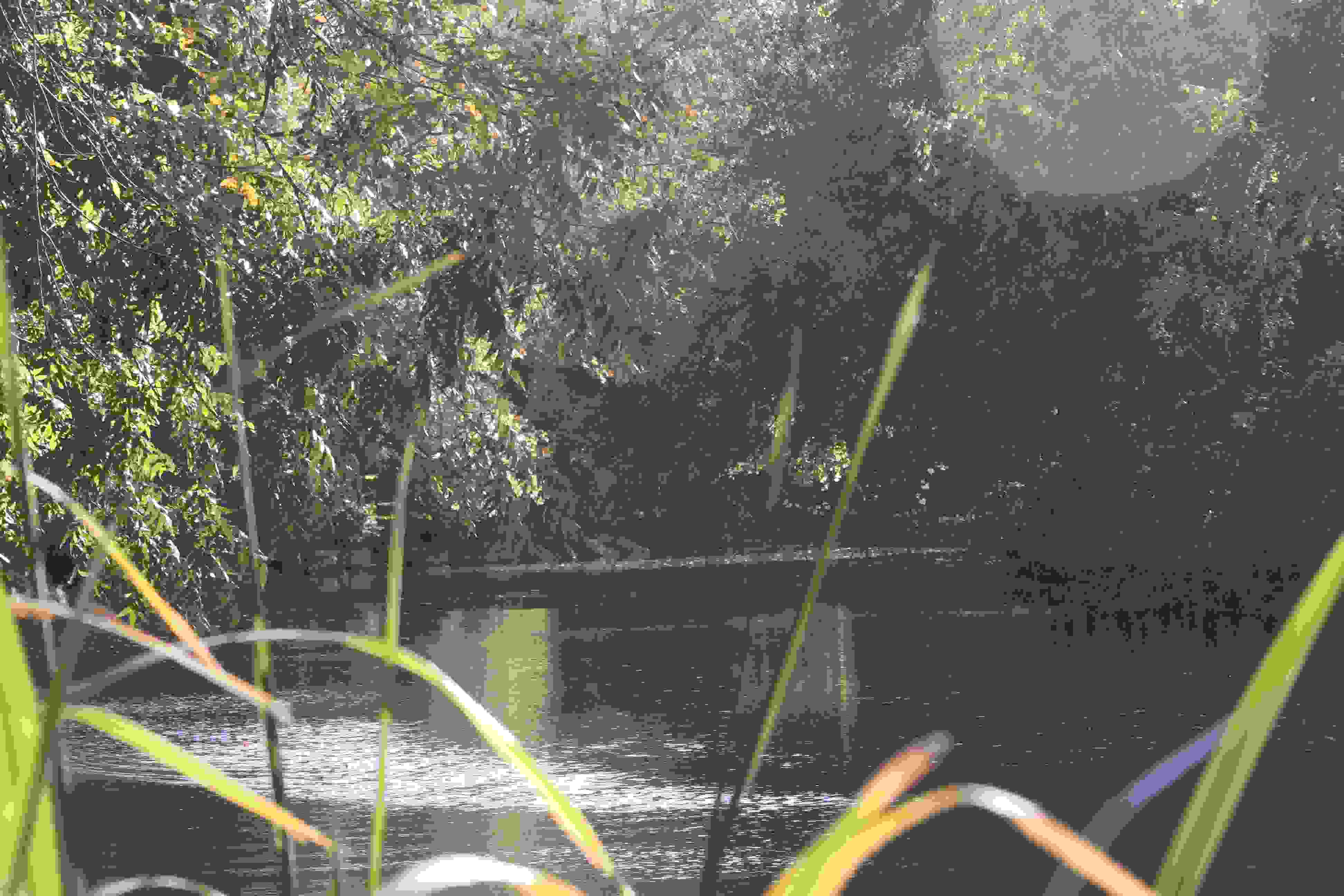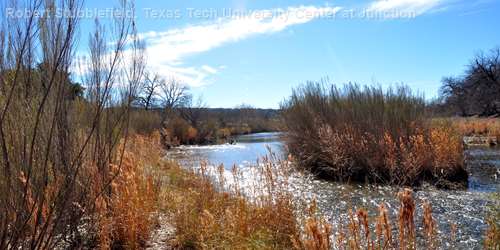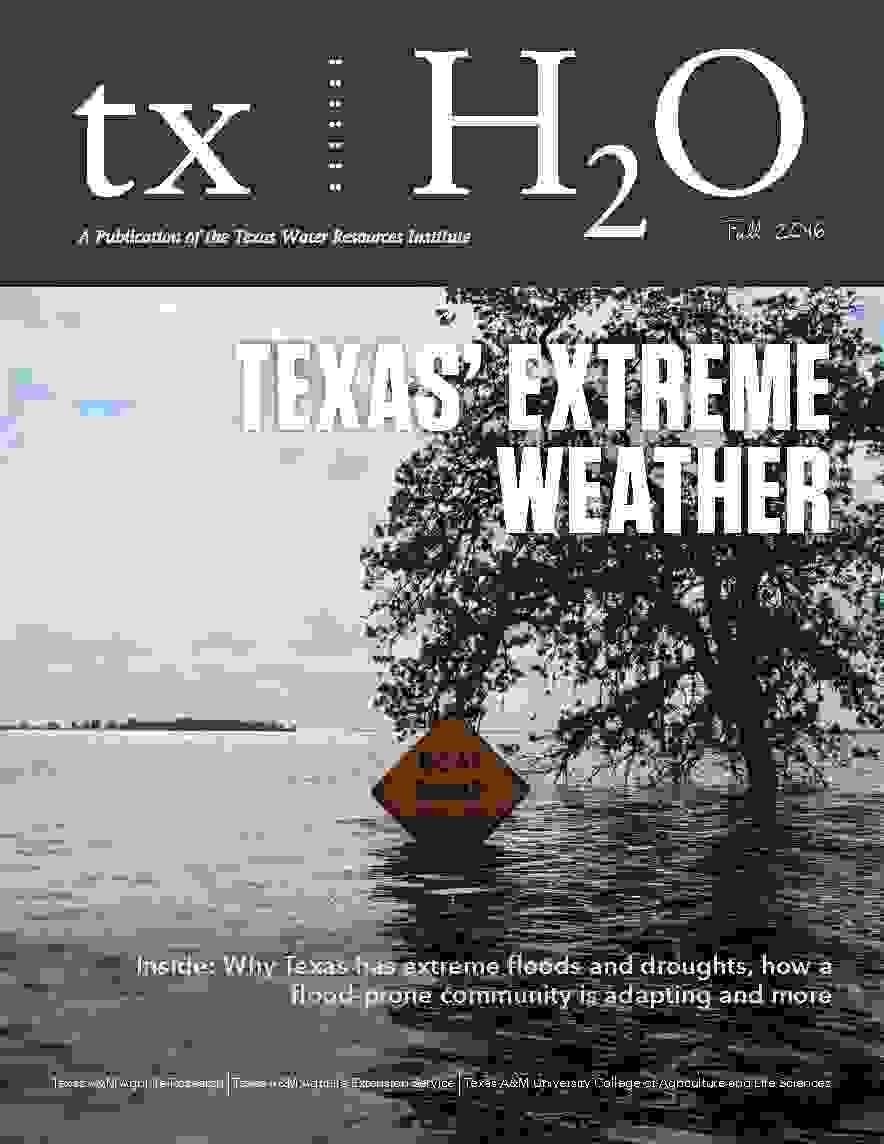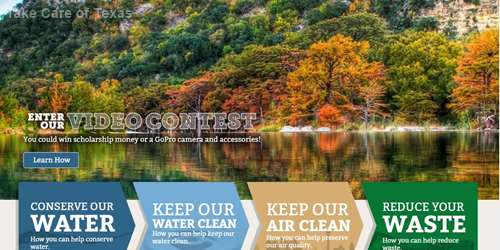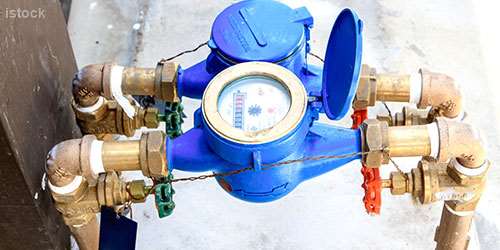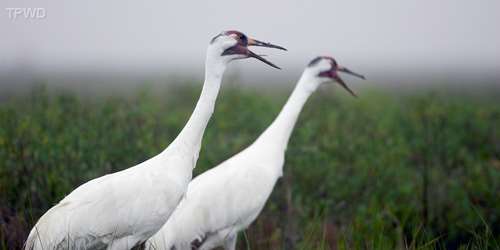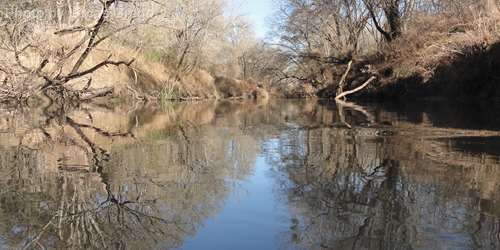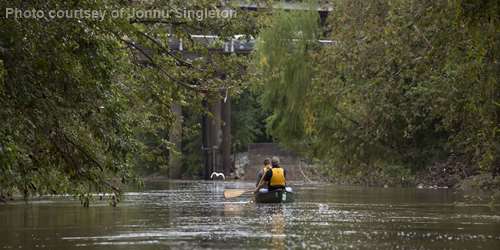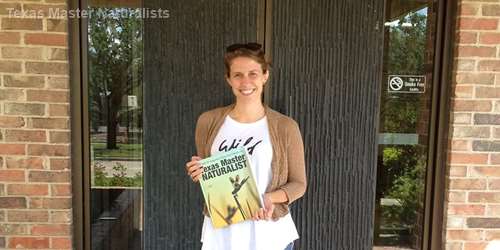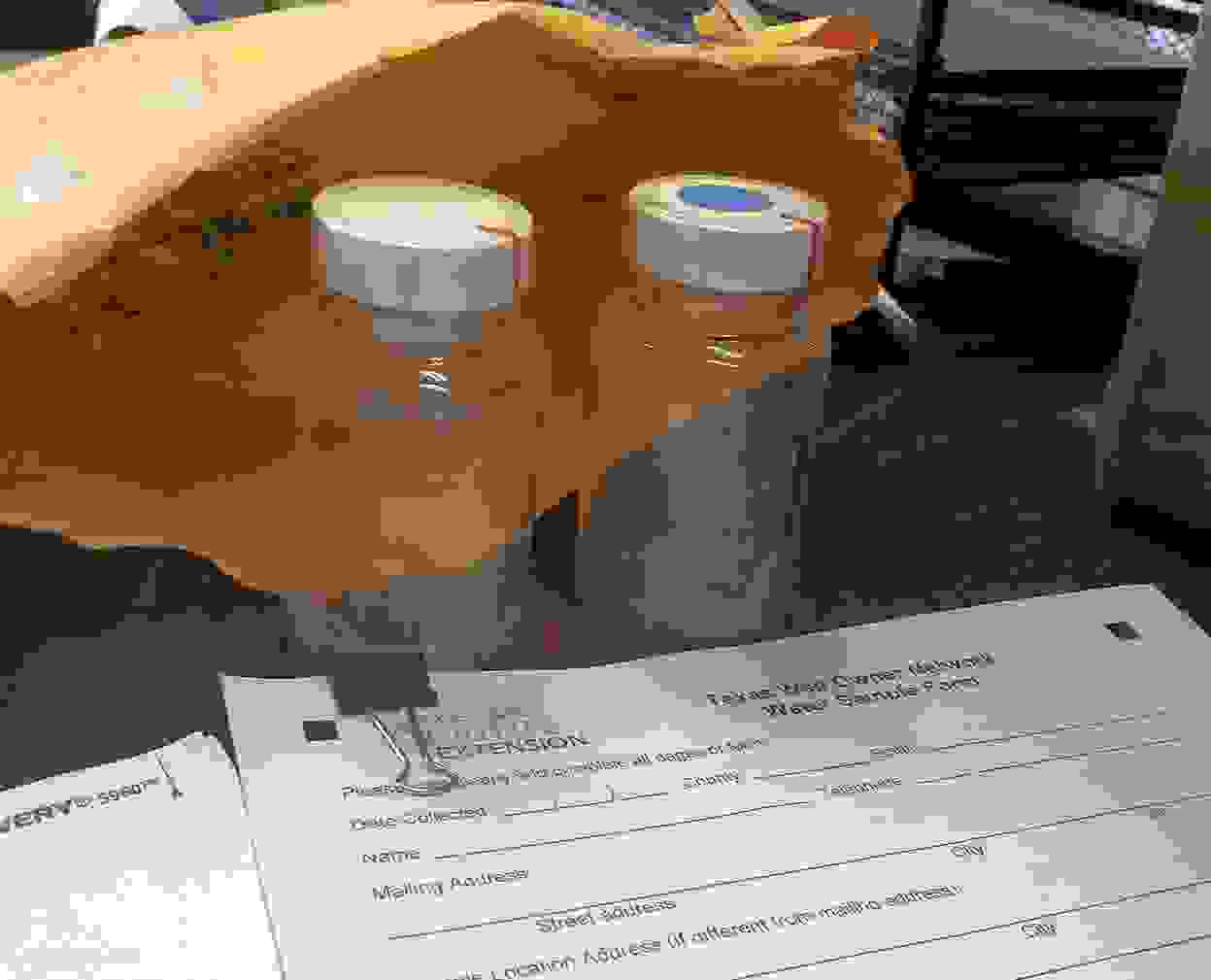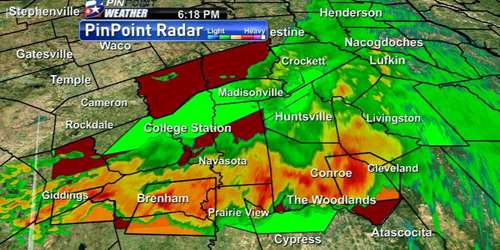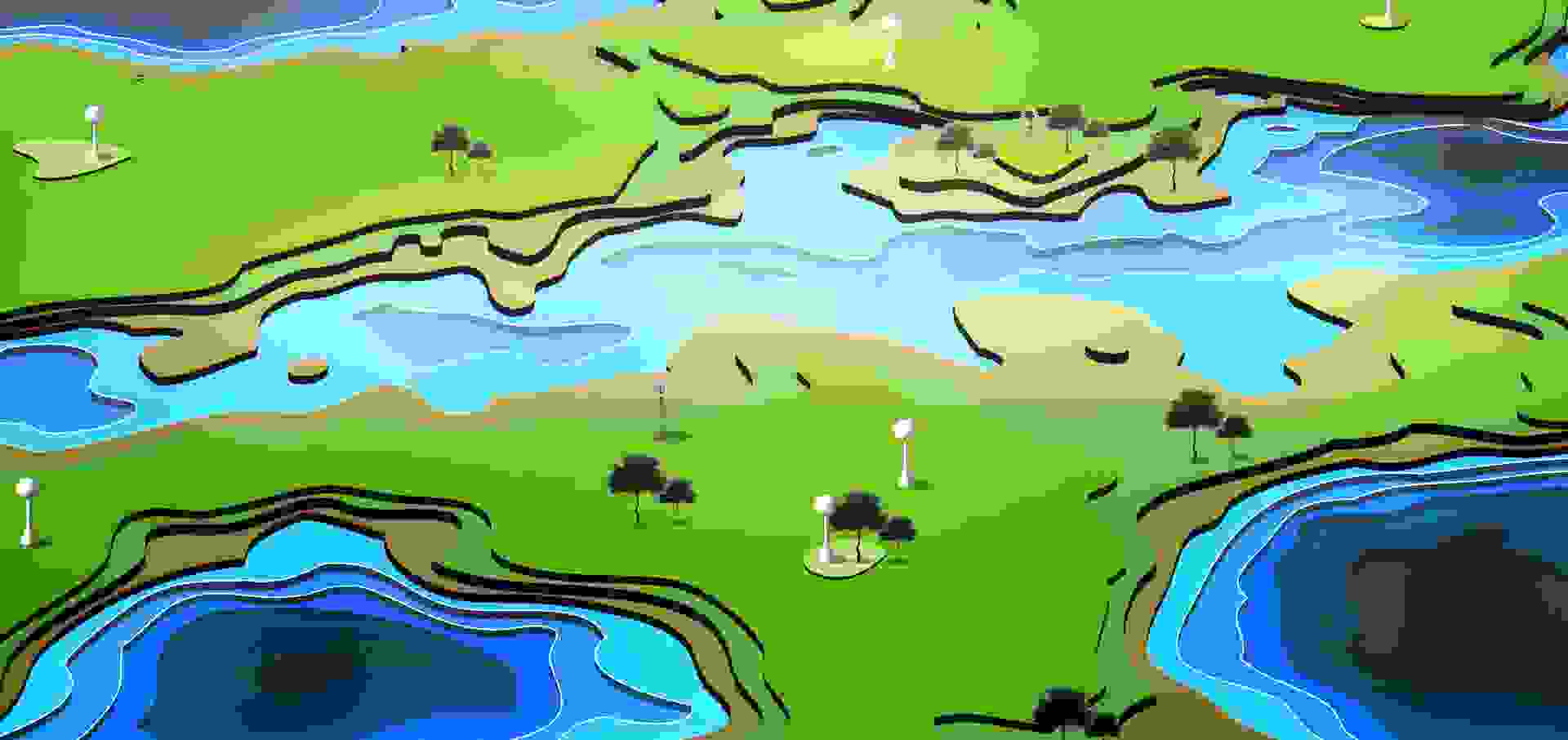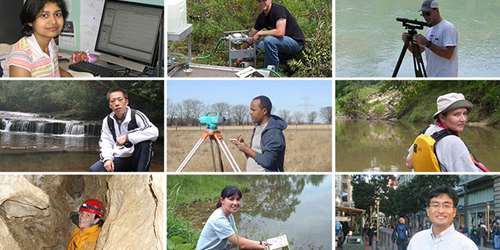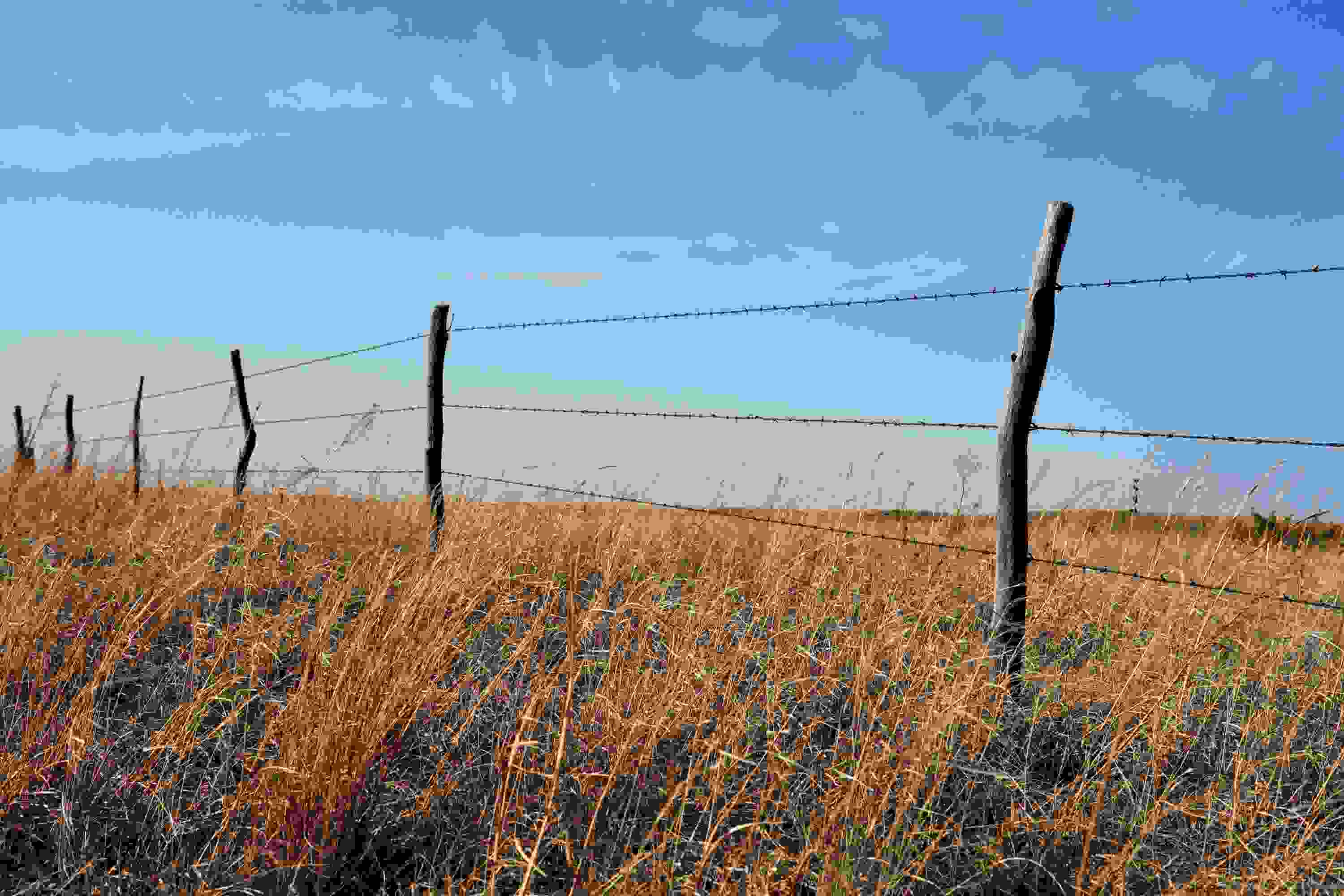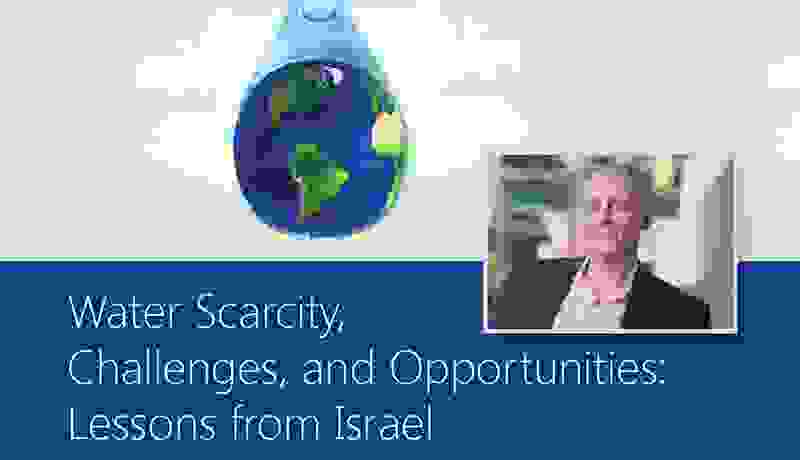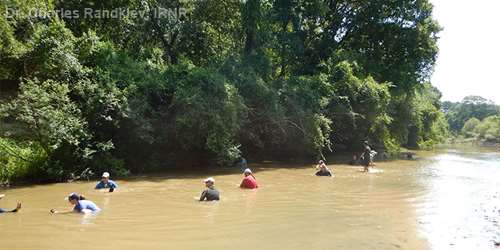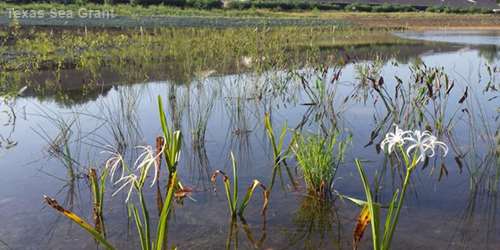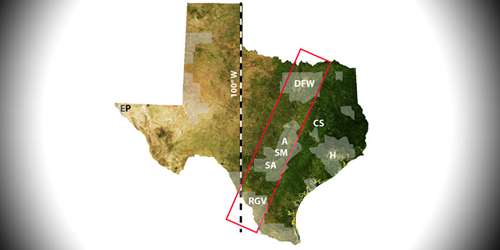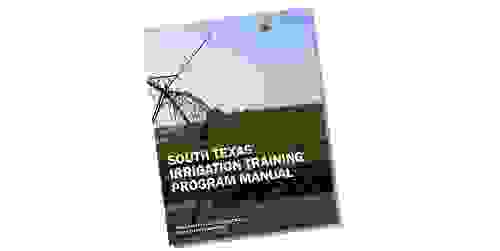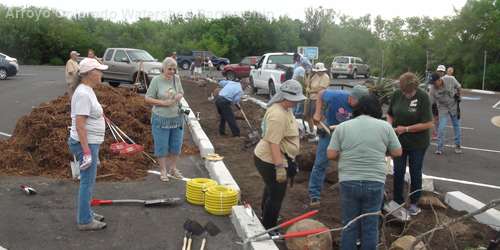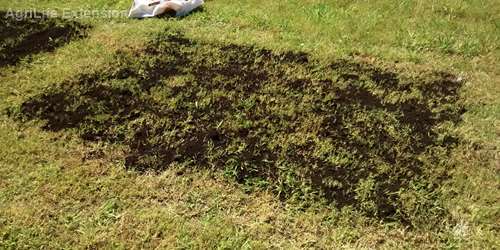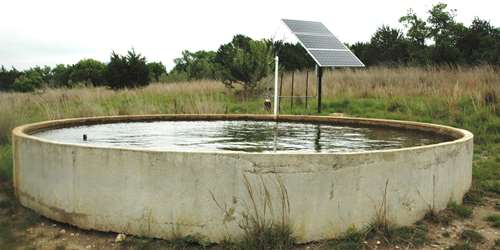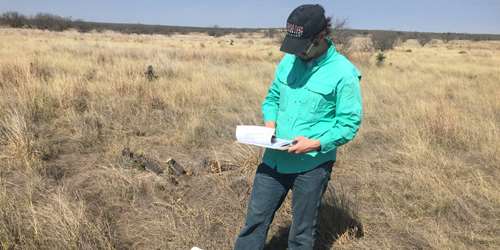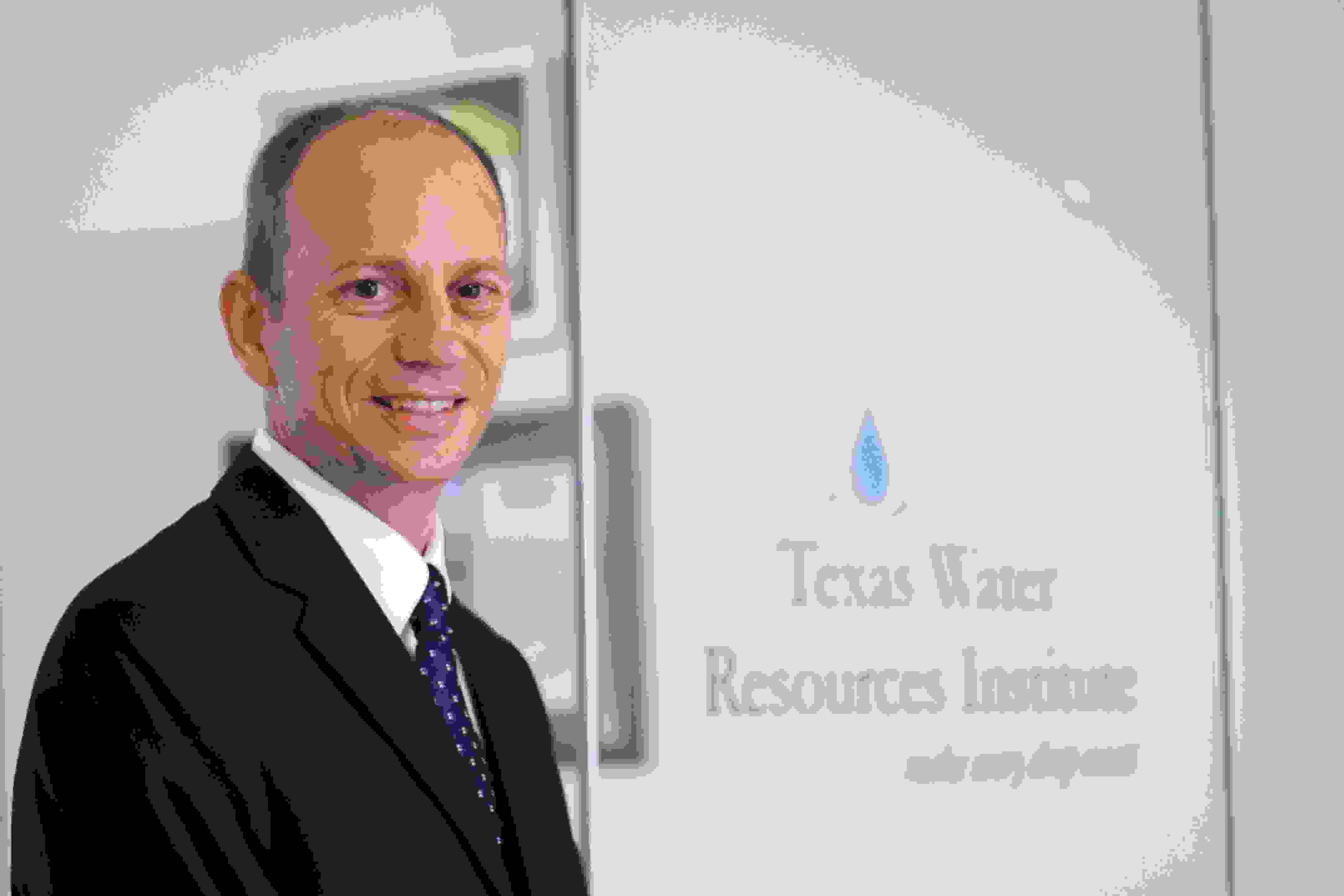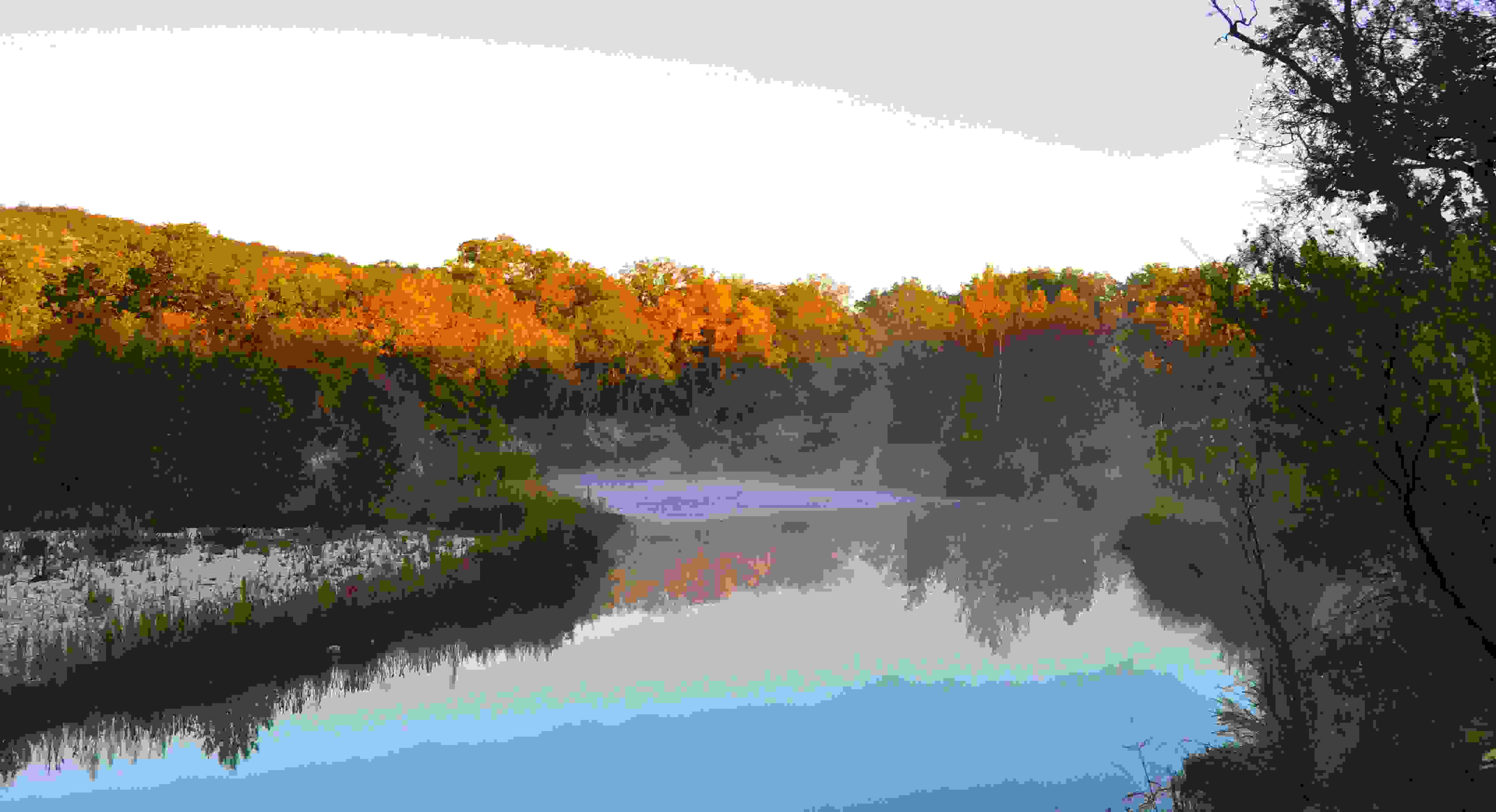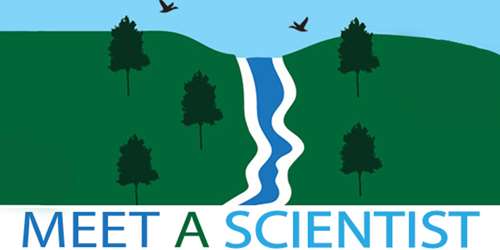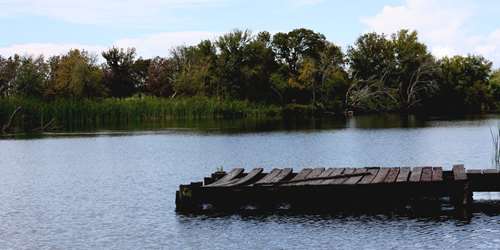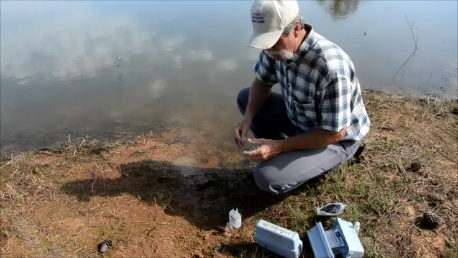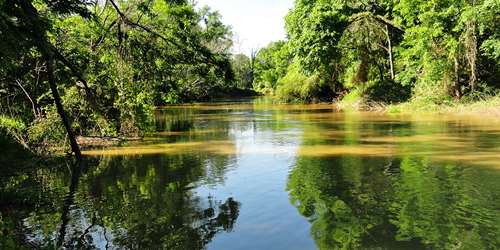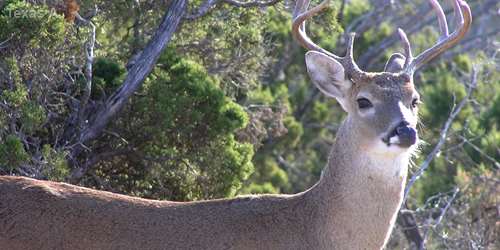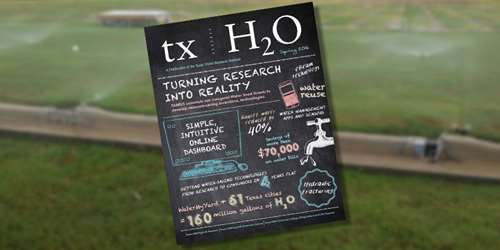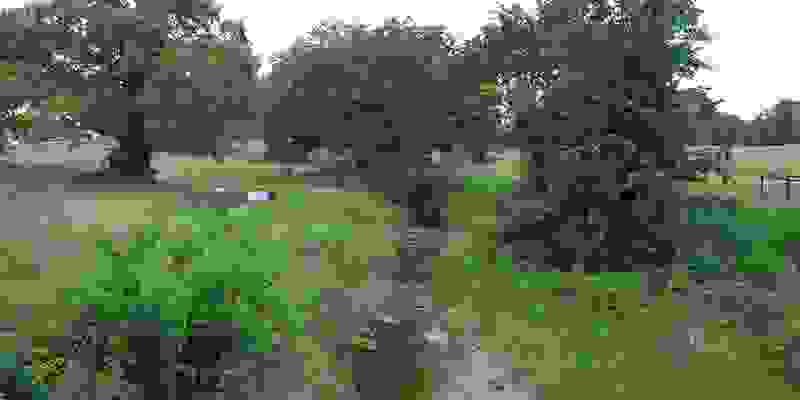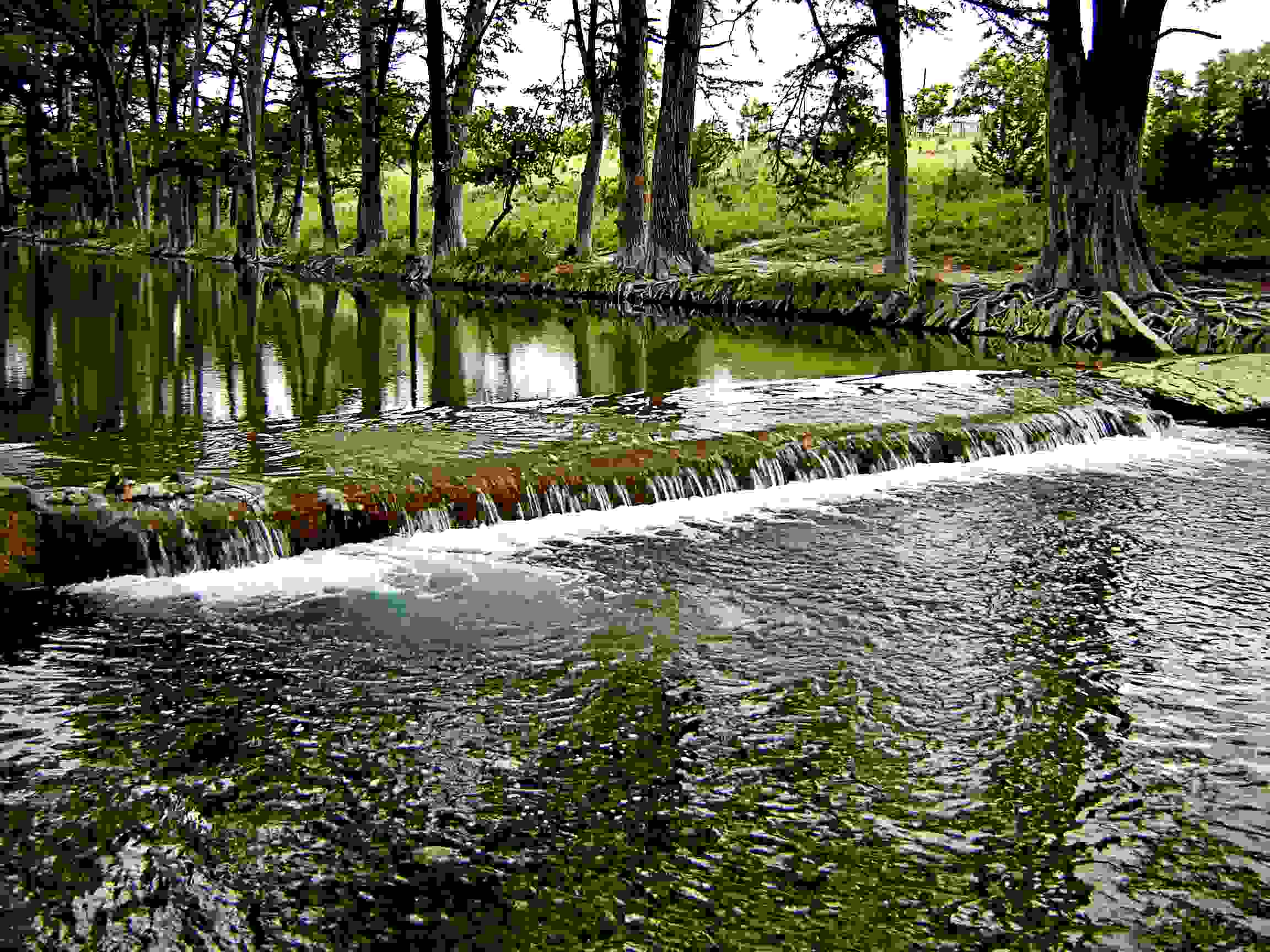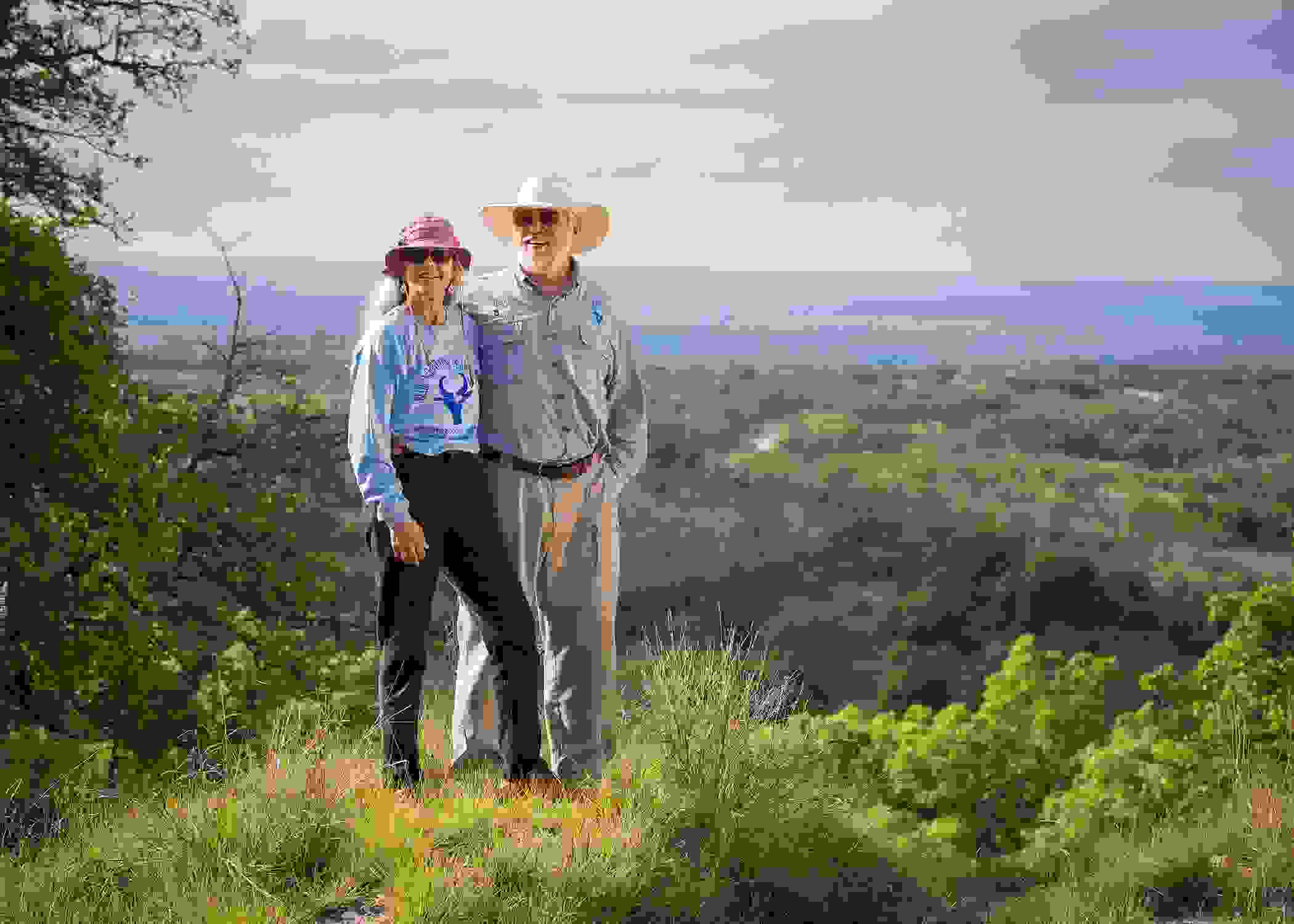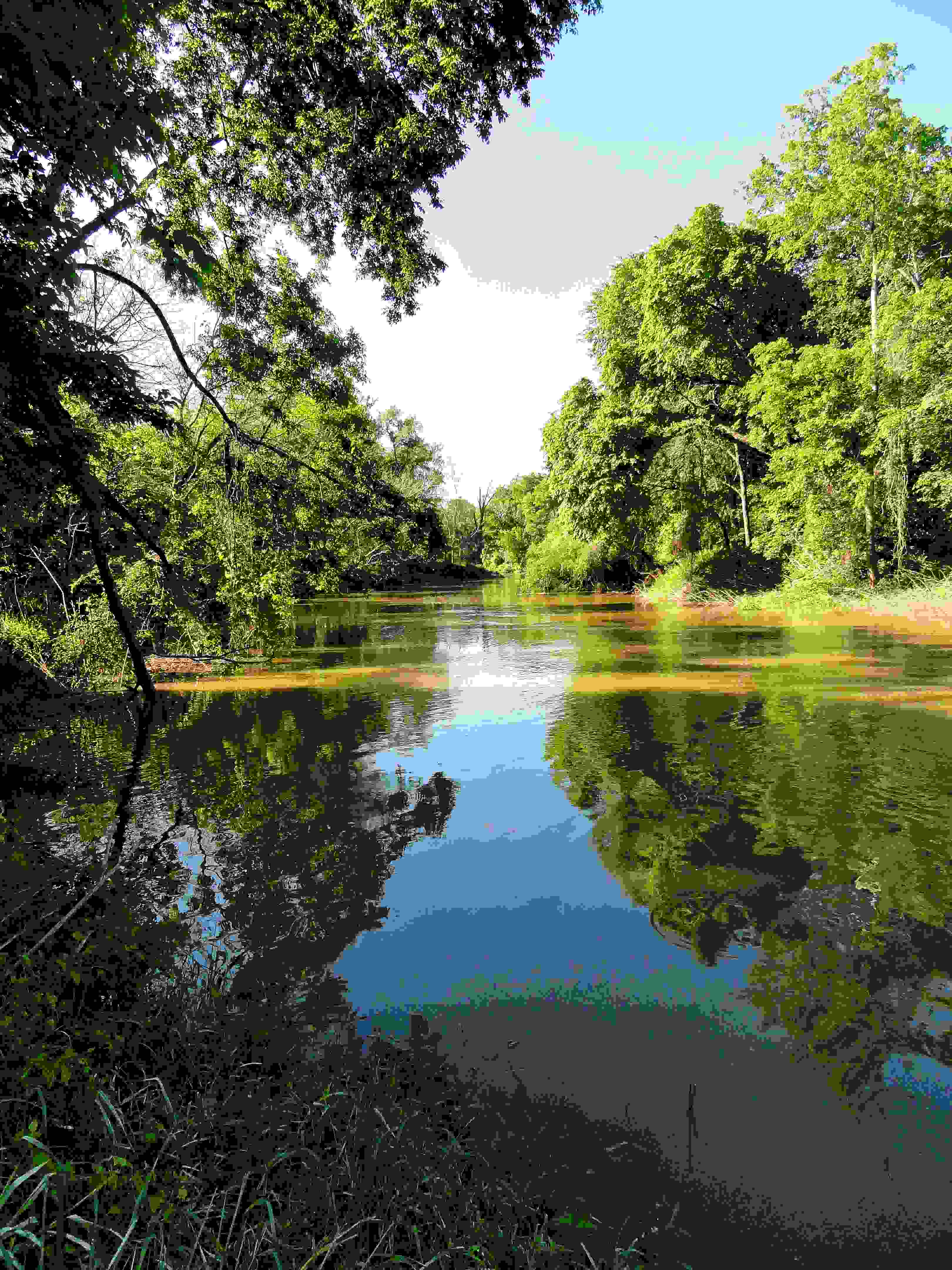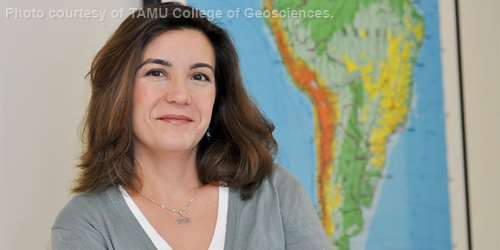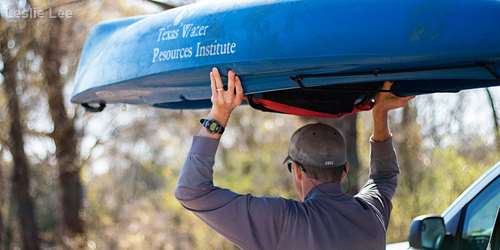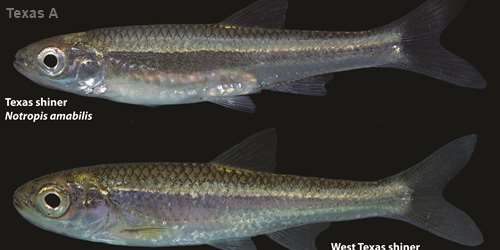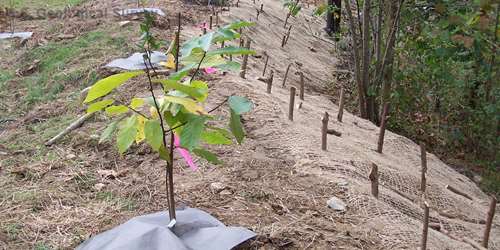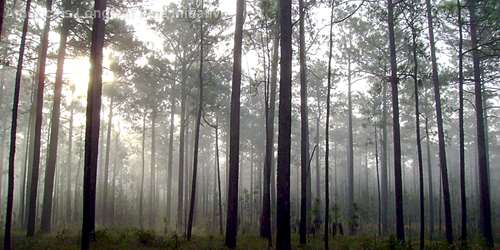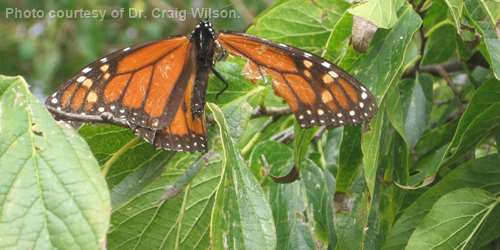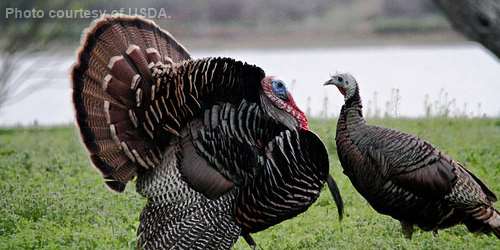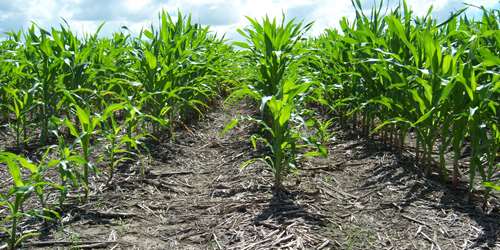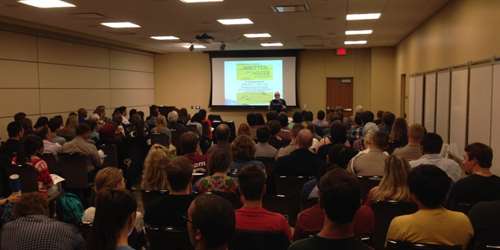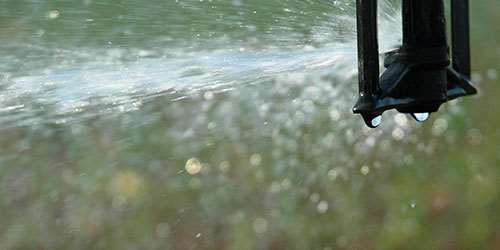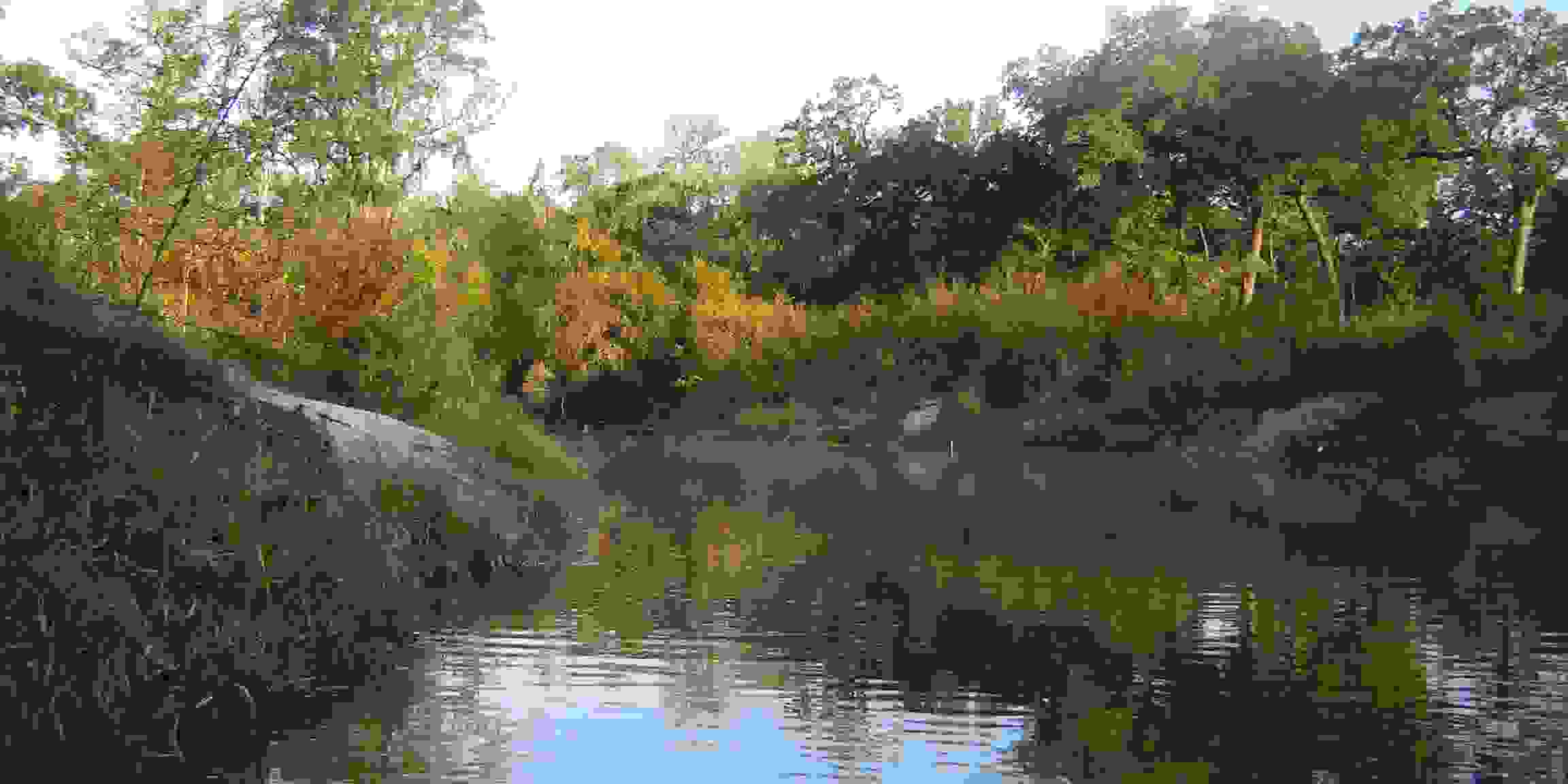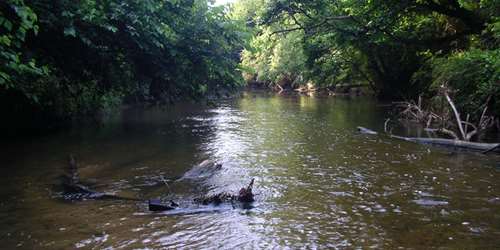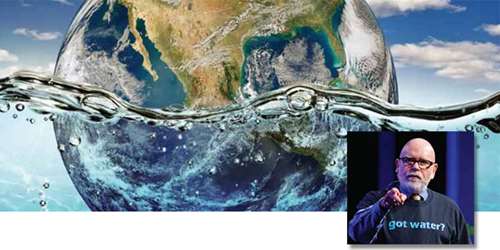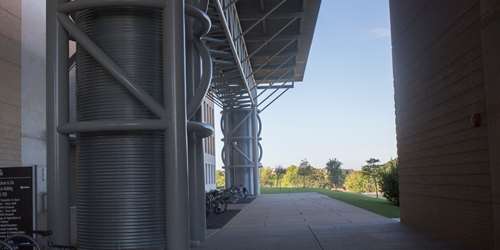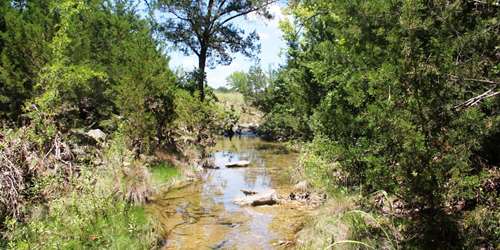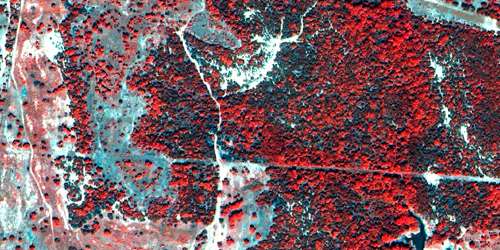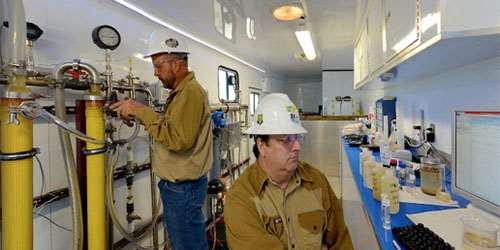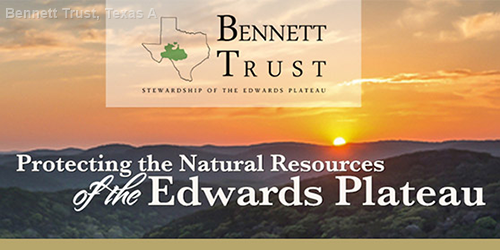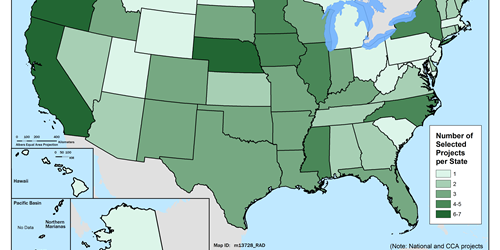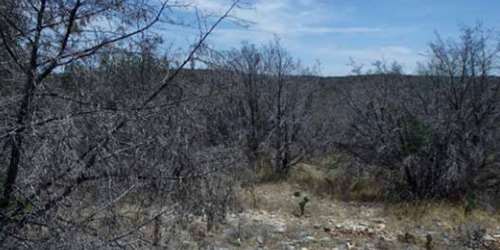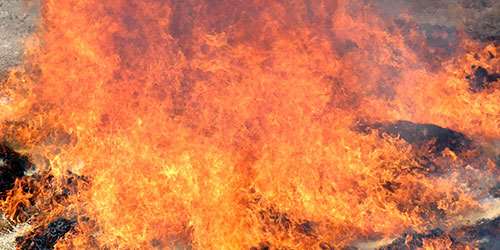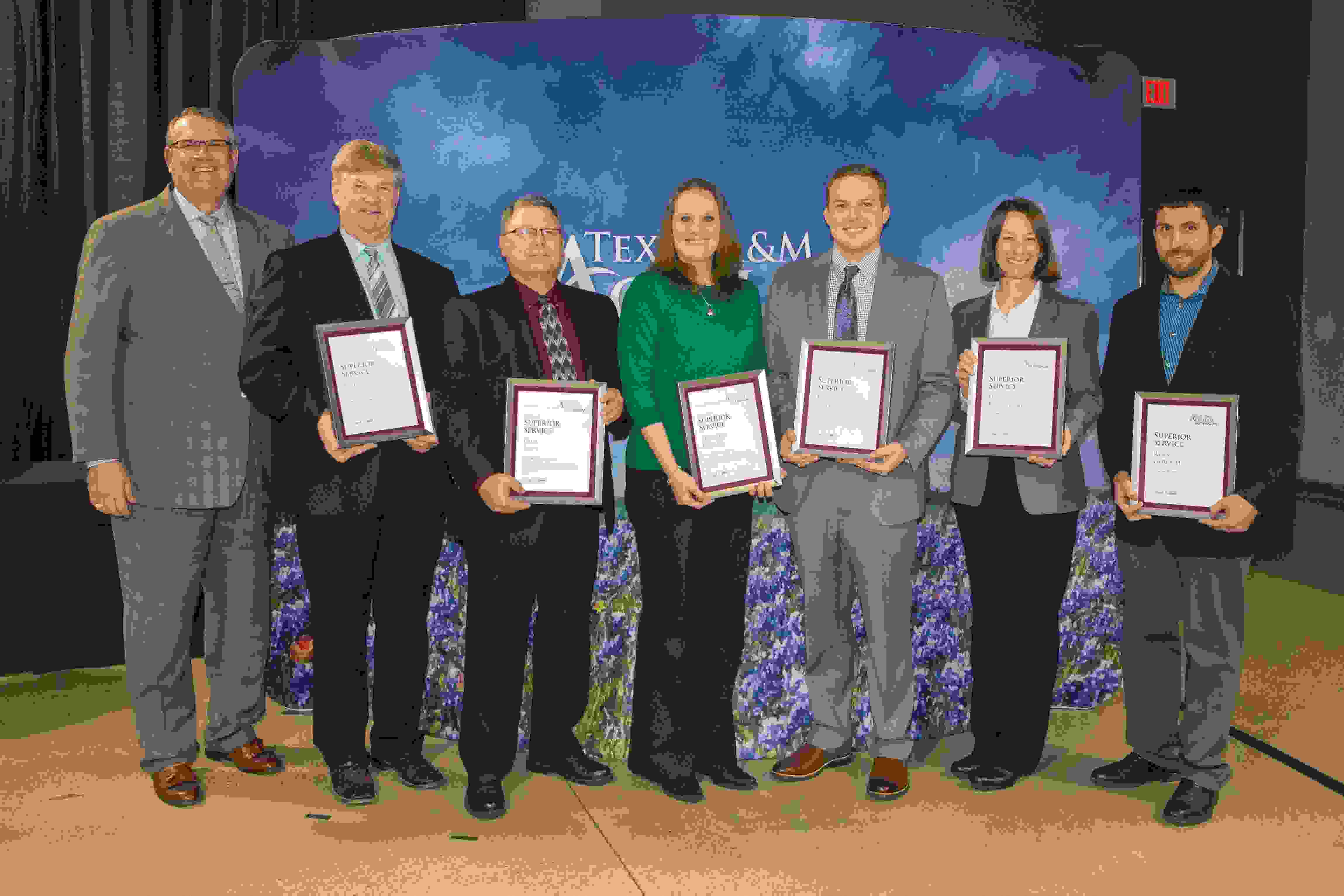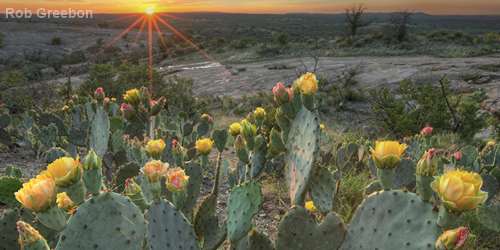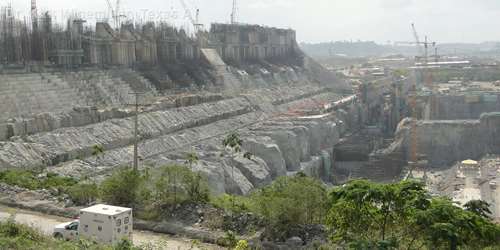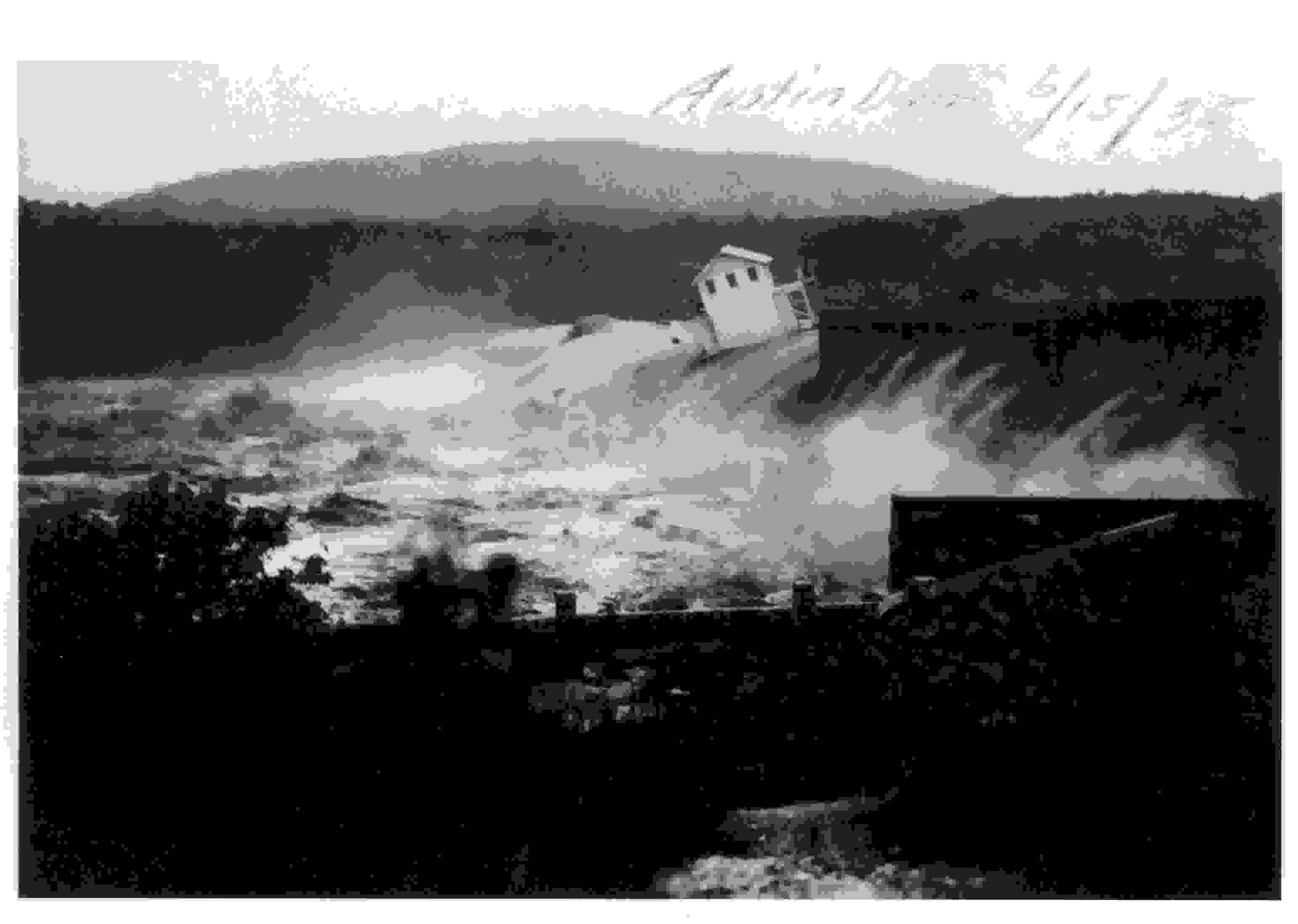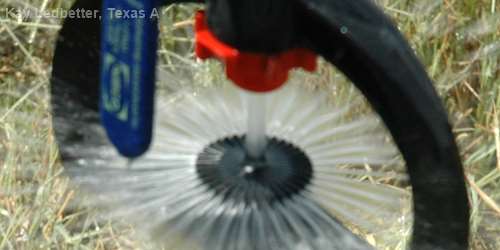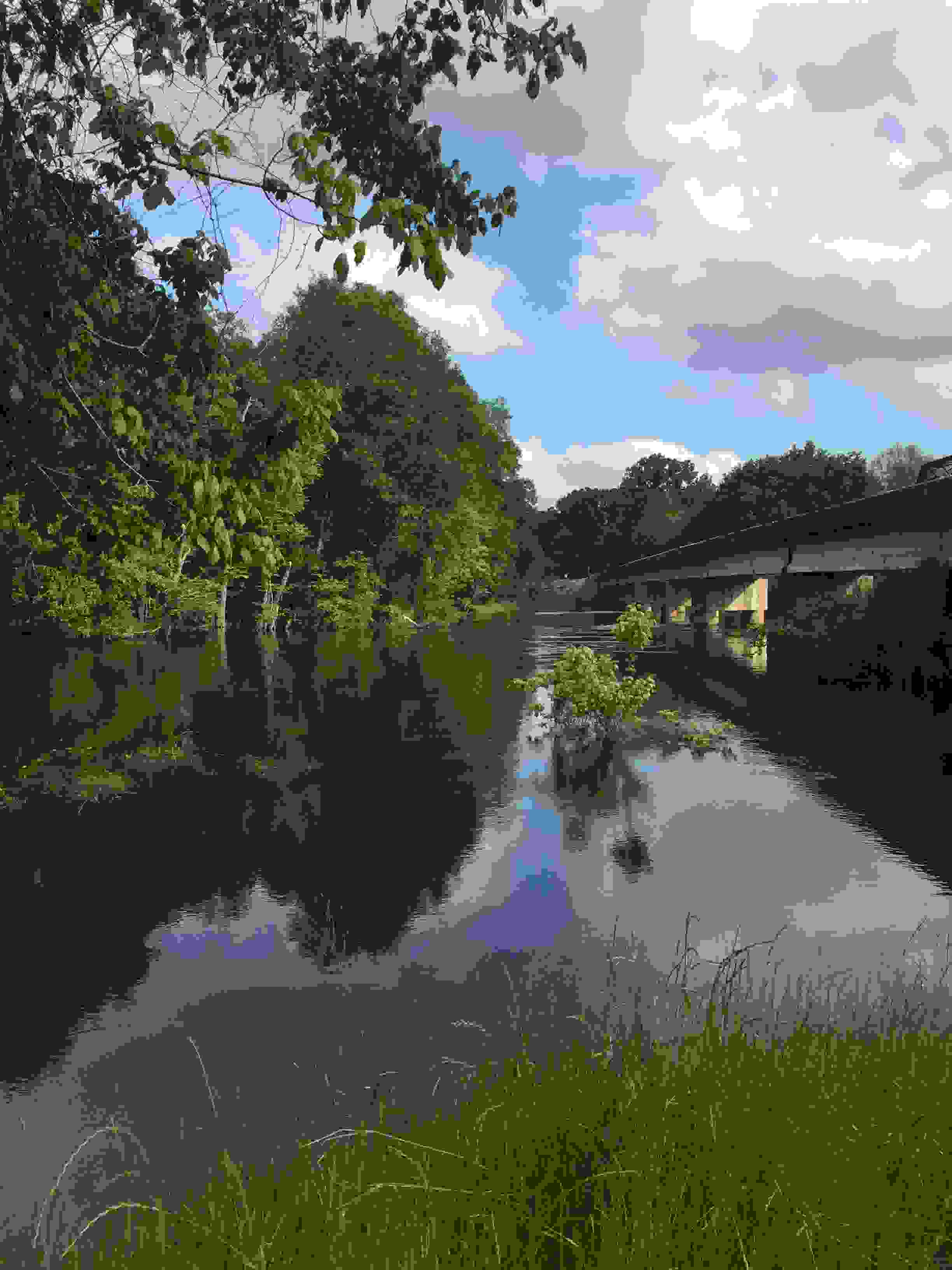For more than a decade, the Texas Bacterial Source Tracking Program has improved the identification process for bacterial pollution sources in watersheds across Texas to help restore water quality and protect human health, according to a Texas Water Resources Institute official.
Read MoreThe 2011 statewide drought is ranked as the most severe one-year drought on record. In the five years since, 16 regional water planning groups throughout the state have worked to develop regional water plans that would form the basis for the 2017 State Water Plan.
Read MoreThe Texas Water Resources Institute (TWRI) has announced the request for pre-proposals for the National Competitive Grant Program by the U.S. Geological Survey, in cooperation with the National Institutes for Water Resources.
Read MoreThe Texas A&M Institute of Renewable Natural Resources (IRNR) bat research team is asking for help from citizens in its efforts to document bat populations in Texas.
Read MoreThe 2017 the Universities Council on Water Resources (UCOWR) and the National Institutes for Water Resources (NIWR) conference will be held June 13-15, 2017, in Fort Collins, Colorado.
Read MoreThe Texas Sea Grant College Program has released its 2018-2020 request for research proposals.
Read MoreIn a December news release, the Texas Parks and Wildlife Department (TPWD) announced its support of the U.S. Fish and Wildlife Service (USFWS) proposal to remove the black-capped vireo from the federal endangered species list.
Read MoreThe Texas Water Development Board (TWDB) is soliciting applications for Agricultural Water Conservation Grants.
Read MoreWhat if there was a way to irrigate less but still have good-looking landscapes?
Thanks to research results recently published by the Texas A&M Institute of Renewable Natural Resources and the Texas Water Resources Institute, homeowners and landscapers can now learn exactly how little water popular Central Texas ornamental plants need to not only survive but thrive.
Read MoreFifteen years ago, Dr. Richard White began to think about the need to consolidate Texas A&M University’s Department of Soil and Crop Sciences turfgrass research in College Station. For years, the professor and his colleagues had conducted field research and analyzed data in two separate locations making their work more difficult and less efficient.
Read MoreThe U.S. Environmental Protection Agency (EPA) has given $3.9 million to researchers in the Cockrell School of Engineering at The University of Texas at Austin to establish the Center for Infrastructure Modeling and Management. The center will develop and improve open source water infrastructure models and share tools and research findings to assist local communities and stakeholders.
Read MoreThe Texas Water Resources Institute is hosting a meeting Dec. 15 for anyone interested in improving and protecting the Lavaca River watershed.
Read MoreThe Texas Water Resources Institute (TWRI)’s Texas Riparian and Stream Ecosystem Education Program will host a workshop from 8:45 a.m.- 4:30 p.m. Dec. 7 in Kenedy for area residents interested in land and water stewardship in the Lower San Antonio River watershed.
Read MoreThe Texas Water Resources Institute (TWRI), the Texas A&M AgriLife Extension Service and the Texas State Soil and Water Conservation Board (TSSWCB) are hosting two public meetings Dec. 8 for anyone interested in improving and protecting water quality in the Navasota River and its watershed downstream of Lake Limestone.
Read MoreThe U.S. Environmental Protection Agency (EPA) recently accepted the Upper Llano River Watershed Protection Plan, which will help prevent future declines in water quality and stream flow, according to plan developers.
Read MoreThe Texas Water Resources Institute recently published a new issue of txH2O, featuring insights into weather extremes in Texas. In the magazine, researchers and scientists explain Texas’ propensity for droughts as well as the Central Texas phenomenon of Flash Flood Alley.
Read MoreGrowing up in eastern North Carolina, Michael Schramm spent most of his youth surfing, fishing and exploring the rugged Atlantic coast. The barrier island beaches not only influenced his childhood activities but also helped develop his professional interests.
Read MoreThe new website recently launched by Take Care of Texas, an initiative of the Texas Commission on Environmental Quality, provides a variety of resources for Texans.
Read MoreThe Texas Water Resources Institute (TWRI), Texas A&M Engineering Experiment Station and Johnson Controls Inc. are holding advanced metering infrastructure system workshops for water utilities personnel in five Texas cities in November.
Read MoreThe iconic, endangered whooping crane has embarked on its annual fall migration and the Texas Parks and Wildlife Department (TPWD) is reminding Texans to expect the large birds to be moving through the state in the weeks ahead as they travel to wintering grounds along the Texas coast.
Read MoreThe Texas Water Resources Institute (TWRI) Texas Riparian and Stream Ecosystem Education Program will host a workshop from 8 a.m-4 p.m. Nov. 9 in Centerville for area residents interested in land and water stewardship, to benefit stream and riparian areas along the Navasota River.
Read MoreThe Texas A&M AgriLife Extension Service and Lower Colorado River Authority will present a Landscape Irrigation System Evaluation Workshop Nov. 16 in Austin.
Read MoreThe Urban Riparian Symposium will be held Feb. 15-17, 2017, in Houston, and natural resource professionals are invited to attend, share ideas and discuss management and policy issues.
Read MoreDespite its geographical location in a desert by salty seas, Israel has used technology, policy and innovation to achieve water security and even abundance, according to Gabriel Eckstein, professor of law at the Texas A&M University School of Law.
Read MoreMost people are wary of parasitic insects such as lice and ticks. But for Dr. Jessica Light, understanding these complex parasites is a driving force of her research.
Read MoreTexas Master Naturalists interested in better understanding and solving water issues across the state now have two new opportunities to do so.
Read MoreResults of recent private water well screenings in five South Texas counties underscored the importance of regular testing of private water wells, according to a Texas Well Owner Network official.
Read MoreFrom flash floods to flash droughts, the Brazos Valley is no stranger to severe weather. The region, which sits between the Navasota and Brazos rivers in southeast central Texas, has experienced extreme weather patterns in recent months. On May 26, three tornadoes hit in the area, beginning a series of weather woes.
The Texas A&M AgriLife Extension Service in the Lower Rio Grande Valley is offering its annual soil testing campaign Oct. 3 through Jan. 31, 2017, according to AgriLife Extension personnel.
Read MoreEarly registration is open for Water for Texas 2017, set for Jan. 23-25, 2017, in Austin. The two-day conference is hosted by the Texas Water Development Board (TWDB) and will focus on water issues and solutions that affect all Texans.
Read MoreThe Texas Water Resources Institute (TWRI) has called for pre-proposals for graduate students conducting water resources research in Texas. TWRI has funds available for graduate students at Texas universities through two programs.
Read MoreThe Conference Planning Committee of the Universities Council on Water Resources (UCOWR) and the National Institutes for Water Resources (NIWR) have invited proposals for special sessions during the conference, set for June 13-15, 2017 in Fort Collins, Colorado.
Read MoreOrganizers of the North Texas Conservation Easement Workshop are aiming to help rural landowners hang on to their piece of the state. The conference will start with registration at 9:15 a.m., followed by the program from 9:45 a.m. to 3:15 p.m. on Sept. 16 at the Texas A&M AgriLife Extension Service office in Parker County, 604 N. Main Street in Weatherford.
The Texas Leadership Roundtable on Water is hosting a panel discussion with Texas water experts 2:30-4 p.m. Sept. 8 in the Betty King Committee Room of the Texas Senate.
Read MoreGabriel Eckstein, professor of law at the Texas A&M University School of Law, will present a seminar Sept. 15 at Texas A&M University. The seminar, Water Scarcity, Challenges, and Opportunities: Lessons from Israel, will begin at 4 p.m. in the Gates Ballroom of the Memorial Student Center, with a reception to follow from 5 to 6 p.m.
Read MoreMore than 75 scientists, students and others heard from experts on topics related to mollusk conservation during the Texas Mollusk Symposium Aug. 8-11 in Dallas. The symposium was a collaborative effort of the Texas Parks and Wildlife Department, University of Texas at Tyler, U.S. Fish and Wildlife Service and Texas A&M Institute of Renewable Natural Resources.
Read MoreVolunteers and staff from the Texas Coastal Watershed Program (TCWP) and Clear Lake City’s Exploration Green Conservancy raced an oncoming storm earlier this summer and saw first-hand the effectiveness of their work to help manage floodwaters and improve water quality in the Galveston Bay watershed.
Read MoreResiliency is defined as the ability to recover quickly from setbacks and a group of university researchers are examining just how resilient Texas may be to future changes in its population, climate and land use in the 21st century.
Read MoreIrrigation managers and producers in South Texas have a new resource available to help them improve irrigation management and water conservation.
Read MoreAn educational workshop on redesigning parking lots to collect, filter and redirect stormwater held June 25 in Harlingen was a success, according to Jaime Flores, Texas A&M AgriLife Extension Service program coordinator for the Texas Water Resources Institute (TWRI).
Read MoreA team of Texas A&M AgriLife Extension Service experts has initiated the first research trials on ornamental turfgrass varieties applying Earth-Kind Landscaping principles, which emphasize environmental responsibility through water conservation and limited chemical inputs.
Read MoreWell owners who drink water from a private well should have the water tested at least once a year to make sure that it is safe to drink. The Texas Well Owner Network (TWON) recommends that well owners test their water at least annually for bacteria, nitrates and contaminants of local concern, such as arsenic.
Read MoreAnyone interested in private water well management is invited to attend upcoming Texas Well Owner Network (TWON) trainings and screenings around the state.
Read MoreIn rural areas of South Texas, oil and gas pipelines, well pads and related road construction cut across miles of countryside and privately owned land. Based on years of observation, researchers have believed oil and gas development activities reduce the land’s native biodiversity and increase invasive species distribution, but they had not yet collected measurable data to support those observations.
Read MoreDr. Kevin Wagner, Texas Water Resources Institute (TWRI) deputy director of engagement, was recently elected to serve on the Universities Council on Water Resources (UCOWR) board of directors.
Read MoreThe Texas Water Resources Institute (TWRI) and Texas Tech University Llano River Field Station, working with the Upper Llano Watershed Coordination Committee, recently completed the draft Upper Llano River Watershed Protection Plan. Stakeholders in the watershed can provide comments on the plan through July 8, during the formal public comment period.
Read MoreAlaska is home to some of the largest animals in North America, such as moose, caribou and muskoxen. While there, Dr. Perry Barboza spent a lot of time thinking and working on these iconic species that roam the tundra and forests.
Read MoreThe Texas Water Resources Institute (TWRI) is hosting a meeting July 7 for anyone interested in improving and protecting the Tres Palacios Creek watershed along the Texas Gulf Coast.
Read MoreSummer is beginning to heat up in Texas, and a Texas A&M AgriLife Extension Service expert advises landowners to start monitoring stocked ponds for oxygen depletion.
Read MoreThe Texas Water Resources Institute (TWRI), Texas A&M AgriLife Extension Service and Texas State Soil and Water Conservation Board are hosting two public meetings in July for anyone interested in improving and protecting water quality in the Navasota River and its watershed downstream of Lake Limestone.
Read MoreAfter extensive public testimony, the Texas Parks and Wildlife Commission recently approved an amended set of regulations for artificial movement of deer by permit as part of the state’s chronic wasting disease (CWD) management plan, according to the Texas Parks and Wildlife Department (TPWD).
Read MoreThe Texas Water Resources Institute has published the spring 2016 issue of txH2O magazine, featuring research projects from throughout The Texas A&M University System funded by the inaugural round of water research seed grants.
Read MoreOn the sprawling Texas A&M University campus, a tributary of White Creek begins near the Horticulture/Forest Science Building and flows into White Creek just before the George Bush Presidential Library and Museum.
Read MoreFrom the Sea of Galilee in Israel, to the northern Gulf of Mexico, to a neotropical river in Venezuela, Dr. Daniel Roelke’s research has led him all over the world — in pursuit of species smaller than a drop of water.
Read MoreThe Texas Water Development Board (TWDB) unanimously voted to adopt the 2017 State Water Plan at its May 19 meeting.
Read MoreThe U.S. Army Corps of Engineers Institute for Water Resources (IWR), in cooperation with the National Institutes for Water Resources (NIWR) requests proposals for grants to support applied investigations in select topic areas related to water resources issues in the United States.
Read MoreThe Texas Water Resources Institute (TWRI) Texas Watershed Planning Program is hosting a two-course series on watershed stakeholder engagement for water and natural resources professionals June 13-14 in Dallas.
Read MoreThe Texas Water Resources Institute (TWRI) is hosting three meetings this summer for anyone interested in improving and protecting the Tres Palacios Creek watershed along the Texas Gulf Coast.
Read MoreEvery year, the Texas Parks and Wildlife Department (TPWD), in partnership with the Texas Parks and Wildlife Foundation, honors landowners from across the state with the Lone Star Land Steward Award for their contributions to natural resource conservation and management.
Read MoreFrom longleaf pine forest management to big-city water conservation technologies, and from tracking Louisiana pine snakes to helping rural water well owners, the Texas A&M Institute for Renewable Natural Resources and the Texas Water Resources Institute spent 2015 improving water and natural resources conservation and management all over Texas and the country.
Read MoreFor some people, having access to clean water is not as easy as simply turning on a faucet. Some of the United States’ poorest regions rely on inadequate water delivery systems, unaffordable potable water or unclean tap water for their household water use. This is a reality for tens of thousands of households in colonias, underdeveloped communities along the U.S.-Mexico border often lacking basic infrastructure, and it is also a focus of Dr. Wendy Jepson’s research.
Read MoreWater quality monitoring on the Navasota River.
Read MoreWith no more “swimmable” water than thirsty West Texas has, it’s hard to imagine a fish, even a minnow-sized fish could remain “missing” for more than a century. But due to a mistaken identity, such is the case, said a Texas A&M AgriLife Research scientist.
Read MoreFrom restoring sagebrush to rejuvenating watersheds and landscapes after fires, ecosystem restoration can bear substantial economic fruit for local, state and national economies, according to a recent study by the U.S. Geological Survey (USGS).
Read MoreThe Crown of the Continent is a vast, unique region, with its 18 million acres stretching from Montana to across the Canadian border and holding one of the largest untouched landscapes in North America. It includes Glacier National Park, many different ecosystems and huge swaths of public lands.
Read MoreWhen spring migration begins, monarch butterflies emerge from their chrysalises by the millions, preparing for the 2,000-mile, multigenerational journey from Mexico to Canada. Migration is critical for the survival of the iconic North American butterfly, known for its bright orange and black markings, but habitat losses have led to a significant population decline in the past two decades.
Read MoreThis spring more than ever, wild turkeys across the United States are facing an increasing threat from feral swine, according to the U.S. Department of Agriculture – Animal and Plant Health Inspection Service (USDA-APHIS).
Read MoreThe U.S. Fish and Wildlife Service (USFWS) has completed analysis of aerial surveys of the Aransas-Wood Buffalo whooping crane population, the only surviving wild population of whooping cranes in the world.
Read MoreAnyone interested in private water well management is invited to attend upcoming Texas Well Owner Network trainings and screenings around the state.
Read MoreThe public comment period for the Draft 2017 State Water Plan for Texas is now open. The Texas Water Development Board (TWDB) will receive public comments on the draft plan until 5:00 pm on Monday, April 25, 2016.
Read MoreThe Texas Water Resources Institute (TWRI) and the Texas A&M Institute of Renewable Natural Resources (IRNR) are partnering with the Association of Texas Soil and Water Conservation Districts (ATSWCD), Texas Wildlife Association, Texas and Southwestern Cattle Raisers Association and Texas State Soil and Water Conservation Board (TSSWCB) to highlight the importance of voluntary land stewardship in Texas during the annual Soil and Water Stewardship Week, April 24-May 1.
Read MoreTwo Texas A&M University System-led projects were recently highlighted as part of the White House Water Summit held on March 22 — World Water Day.
Read MoreNational expert on groundwater and sustainable water management Dr. Michael Campana championed the importance of integrated water resources management (IWRM) to the nation’s water supply, stressing that successful IWRM is “a process, not a prescription” during his keynote lecture at the March 29 Water Daze event at Texas A&M University.
Read MoreThe Texas Water Resources Institute (TWRI) has awarded U.S. Geological Survey (USGS) graduate research grants to two students for March 2016 – February 2017.
Read MoreWater challenges and agricultural sustainability in the Ogallala Aquifer region are the focus of a four-year, $10 million grant that will include scientists from the Texas Water Resources Institute (TWRI), Texas A&M AgriLife Research and the Texas A&M AgriLife Extension Service.
Read MoreThe Texas Water Resources Institute’s water team recently finalized several projects concerning the Carters Creek watershed and published technical reports on its findings.
Read MoreThe Texas Water Resources Institute (TWRI)’s Texas Riparian and Stream Ecosystem Education Program is hosting three free workshops in April and May for Texas residents interested in land and water stewardship.
Read MoreThe Water Management and Hydrological Science (WMHS) program at Texas A&M University is hosting Water Daze, a public event featuring keynote speaker Dr. Michael Campana, faculty research presentations and a student poster competition, March 29-30 on the Texas A&M campus.
Read MoreDr. Kevin Wagner has been named the deputy director of engagement of the Texas Water Resources Institute (TWRI). Formerly TWRI associate director, Wagner’s new role will include engaging with the water resources community in Texas and the nation and coordinating TWRI’s outreach activities with the Texas A&M AgriLife Extension Service and The Texas A&M University System.
Read MoreOver the last decade, Texas A&M University has become a leader in water conservation and sustainability through its campus-wide rainwater harvesting strategies. Rainwater harvesting, or the practice of capturing and collecting rainfall for reuse on-site instead of allowing it to runoff, is an effective strategy for reducing water use.
Read MoreBased on her extensive avian research record, one might assume Dr. Ashley Long, Texas A&M Institute of Renewable Natural Resources (IRNR) research scientist, has been fascinated with birds her whole life. However, Long’s interest in ecology and wildlife didn’t begin until she was in college.
Read MoreWater utilities and municipalities have access to an array of technologies to help consumers save both water and money. The Texas Water Resources Institute (TWRI) recently published two free guides to assist utilities managers as they navigate the possible technologies and look to improve water conservation strategies and implementation.
Read MoreWorld Water Day will be recognized on March 22 all around the globe. The United Nations (UN) General Assembly first designated March 22 as World Water Day in 1993, creating an international observance and an opportunity to learn more about water-related issues and take action.
Read MoreThe Texas A&M Institute of Renewable Natural Resources (IRNR) will conduct an Introduction to ArcGIS 10 training course March 30-31 in San Antonio. The course will be 8 a.m.-5 p.m. both days at IRNR’s San Antonio office, 1919 Oakwell Farms Parkway, Suite 100.
Read MoreApplications are open for the Mickey Leland Environmental Internship Program (MLEIP) at the Texas Commission on Environmental Quality (TCEQ). The paid, full-time summer internship program offers undergraduate and graduate students the opportunity to work in one of 16 Texas cities and complete an internship at TCEQ, at other state agencies or in the private sector.
Read MoreThe third annual Bennett Trust Land Stewardship Conference is scheduled for April 14-15 at the Inn of the Hills Resort and Conference Center in Kerrville. The conference is funded by the Ruth and Eskel Bennett Endowment and hosted by the Texas A&M AgriLife Extension Service, said Dr. Larry Redmon, co-chair and Bennett Trust AgriLife Extension specialist.
Read MoreTexas is the recipient of three of the 84 conservation projects that are part of the U.S. Department of Agriculture (USDA) 2016 Regional Conservation Partnership Program (RCPP), a partner-driven, locally led approach to conservation.
Read MoreThe U.S. Forest Service has released a new report, Effects of Drought on Forests and Rangelands in the United States: A Comprehensive Science Synthesis, which provides a national assessment of peer-reviewed scientific research on the impacts of drought on U.S. forests and rangelands.
Read MoreThe Texas Wildlife Association and Texas A&M AgriLife Extension Service are sponsoring the Wildlife for Lunch 2016 lunchtime webinar series, airing on the third Thursday of every month. These webinars provide science-based information about wildlife, habitat and natural resource management.
Read MoreThe Academy for Ranch Management will host two rangeland prescribed burning workshops in February and March at the Texas A&M AgriLife Research Sonora Station, located on State Highway 55 between Sonora and Rocksprings.
Read MorePrivate landowners and managers tend to shy away from the use of prescribed fire for maintaining rangeland and forest ecosystems in spite of the known benefits because of potential liabilities, according to a Texas A&M AgriLife Research study.
Read MoreFor the Texas A&M Institute of Renewable Natural Resources (IRNR) and the Texas Water Resources Institute (TWRI), 2015 marked another successful year as they partnered in water and natural resource research and education. The institutes are anticipating the important work ahead in 2016 and reflecting on a productive 2015, said Dr. Roel Lopez, IRNR director and former TWRI director.
Read MoreThe Texas Water Resources Institute (TWRI) has awarded 2016 Mills Scholarships to four graduate students conducting water-related research at Texas A&M University.
Read MoreThe Colorado River Alliance, in partnership with the Texas Water Development Board, has created a free, interactive game called Texas 2040. The game helps Texans better understand the water challenges the state’s rivers will face in the next 25 years, said Brent Lyles, the alliance’s executive director.
Read MoreThe Texas Well Owner Network has received a Superior Service Award in the team category from the Texas A&M AgriLife Extension Service.
Read MoreNew strategies for protecting the Texas Hill Country came out of a recently published study by regional planning experts and graduate students at the University of Texas at Austin (UT Austin) School of Architecture. The study addresses threats to water resources, scenic beauty and cultural heritage in the face of rapid population growth in the region, according to the authors.
Read MoreThe Texas Water Resources Institute (TWRI) has announced the Request for Proposals for the FY 2016 National Competitive Grant Program by the U.S. Geological Survey in cooperation with the National Institutes for Water Resources.
Read MoreA group of 40 international scientists led by a Texas A&M University professor says three of the earth’s mightiest rivers are being damaged in the name of progress.
Read MoreThe Texas Water Journal has published “Conjunctive groundwater management as a response to socio-ecological disturbances: a comparison of 4 western U.S. states,” its first paper in Volume 7, Number 1.
Read MoreFarming is a business, and the actions of farmers will be based on economics—even when it comes to water conservation, according to a recent study by Texas A&M AgriLife Research.
Read MoreThere are several new publications from the Texas Water Resources Institute.
Read MoreThe Texas Water Resources Institute’s (TWRI) Texas Riparian and Stream Ecosystem Education Program will host a workshop from 8 a.m.-4 p.m. March 3 in Lampasas for area residents interested in land and water stewardship in the Lampasas River watershed.
Read MoreArchive
Popular Tags
Meet a scientist Navasota River Texas Riparian and Stream Ecosystem Education Program Texas Well Owner Network TWON Watershed Protection Plan irrigation Tres Palacios Creek Urban Riparian water conservation water quality AMI annual report Arroyo Colorado Arroyo Colorado Watershed Partnership Ask CM bacterial source tracking BST climate Earth-Kind

